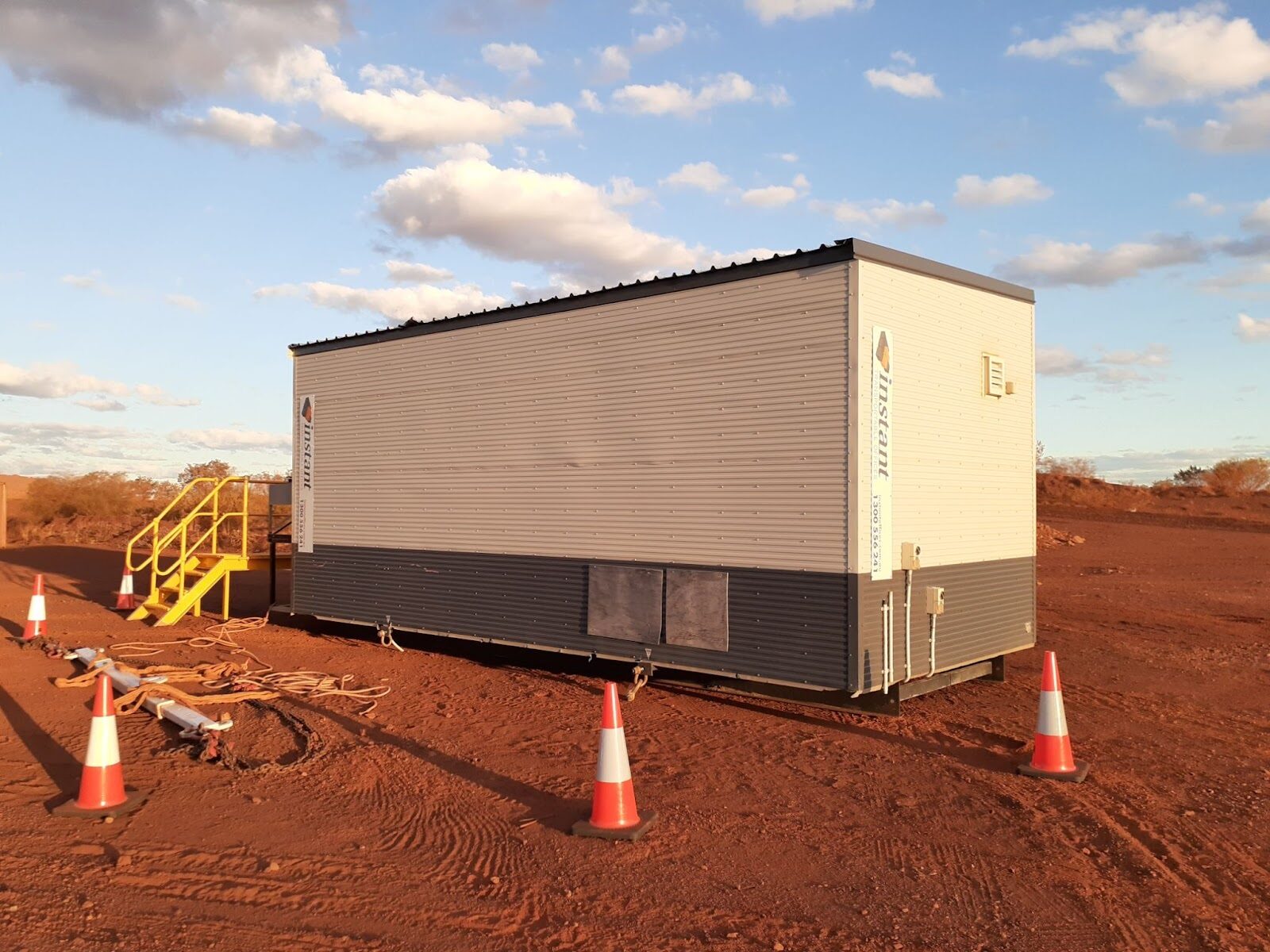Understanding the foundational needs of transportable buildings is essential for their stability and longevity. Concrete footings play a crucial role in ensuring your structure is level, secure, and capable of withstanding various environmental conditions.
Table of Contents
What Are Building Concrete Footings?
Concrete footings form the base of a foundation, bearing the weight of a building to ensure stability and durability. These foundational elements must be robust and well-constructed to withstand heavy loads and prevent any risks associated with shifting or sinking.
Essential for both in-situ and transportable buildings, concrete footings are designed to meet the structural demands of diverse environments, ensuring the long-term integrity and safety of the construction.
Types of Concrete Footings
At Instant Transportable Offices, we primarily use pre-cast concrete footings for our transportable buildings to distribute the structural load over a larger area. In cyclonic regions (Region D), we employ cyclonic footings to enhance anchorage and secure the transportable buildings against extreme weather forces as required by our Structural Engineer. Whilst concrete footings can be poured in-situ (which is preferred by some customers), ultimately it will come down to a cost decision as to which is the best option. Pre-cast footings are made enmasse and are affordable, but transport of them to site can sometimes make it not as cost effective depending on the location of the project.
Our structural engineer will design, detail and certify footings to suit both in-situ (poured on-site) or pre-cast depending on your preference. You should let our team members know this before and design drawings or documentation is started so that we can take your preferred option into account.
Why are Concrete Footings Needed?
Concrete footings are essential for maintaining the structural integrity and levelness of buildings. They provide a solid foundation that distributes the building’s weight evenly, preventing uneven settling or movement that could lead to structural issues. By anchoring buildings firmly to the ground, concrete footings ensure long-term stability and safety.
What’s the Difference Between Cyclonic Concrete Footings and Non-Cyclonic Concrete Footings?

Our cyclonic concrete footings are specifically designed to meet the stringent demands of Region D cyclonic conditions, providing exceptional stability and resistance. Weighing in at 4750 kg, these footings are significantly reinforced to endure the extreme wind forces encountered in such areas.
Standard concrete footings are made for areas with typical weather patterns and don’t require such extensive reinforcement, such as Region A (most of the Perth Metropolitan area). If you’re wondering whether your location requires cyclonic concrete footings, we have a detailed guide that covers the cyclonic and non-cyclonic regions in Australia to help you determine that.
Does That Mean Every Single Demountable Building Need Concrete Footings?

Determining whether every demountable building requires concrete footings involves multiple factors, such as soil type and compaction, building size, location, and specific environmental conditions like wind loadings in cyclonic regions, however 99% of the time the answer will be YES.
Here at Instant Transportable Offices, we rely upon our Structural Engineers advice to ensure full compliance with regulations and guarantee safety.
For personalised help on this, call our team at 08 9406 6600 to receive advice on whether your particular demountable building requires concrete footings and to discuss your project in more detail.
By understanding your project’s unique characteristics and requirements, we can offer guidance that ensures the longevity and safety of your structure. Our team is equipped to assess your needs based on the NCC and provide a practical solution.
Considering a Transportable Building for Your Next Project?

Understanding the crucial role of building concrete footings in ensuring the structural integrity and compliance of your demountable buildings is the first step towards a successful project.
Explore our range of demountable building at Instant Transportable Offices, located at 18 Rogers Way, Landsdale WA 6065, or contact us at +61 (0) 8 9406-6600 for 24/7 customer support.
Frequently Asked Questions
What are concrete footings and why are they important for transportable buildings?
Concrete footings are crucial structural elements that spread a building’s weight evenly to ensure stability and prevent structural problems. For transportable buildings, they are essential in maintaining levelness and integrity across different environmental conditions.
How do cyclonic concrete footings differ from standard footings?
Cyclonic concrete footings are enhanced to endure the high wind forces typical in cyclonic regions. These footings are heavier and sturdier compared to standard footings, which are designed to handle normal weather conditions.
Does every demountable building require concrete footings?
Concrete footings are generally required for demountable buildings, but the necessity can vary based on factors such as soil type, building size, and specific local conditions. Consulting with structural engineers is advisable to receive guidance tailored to your specific needs.

Managing Director at Instant Transportable Offices
Scott Rawson is the Managing Director of Instant Products Group, a specialist group of companies that offer portable building solutions, including sea containers, transportable offices, and portable sanitation products. With more than 20 years of experience in various management positions and a finalist in the WA Business News 40 under 40 awards in 2013, Scott is a highly motivated entrepreneur that has a passion for designing products to suit the needs of individual markets. From the creation of Instant Products Group over 20 years ago, he has successfully grown the group into a multi-million dollar corporation and his success is widely recognised in Western Australia. Scott is dedicated to expanding Instant Products Group nationally and providing high-quality products to a range of sectors, including mining, engineering, property development, and government.

